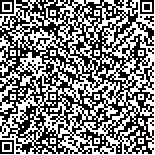游菲,王鹂,马朝阳,刘炼.小组模式康复训练对脑卒中偏瘫患者上肢功能和手功能的影响[J].中华物理医学与康复杂志,2015,37(8):593-596
扫码阅读全文

|
| 小组模式康复训练对脑卒中偏瘫患者上肢功能和手功能的影响 |
|
| |
| DOI: |
| 中文关键词: 小组康复 脑卒中 上肢功能 手功能 日常生活活动能力 焦虑 抑郁 |
| 英文关键词: Group rehabilitation therapy Stroke Upper limb function Hand function Ability of daily living Anxiety Depression |
| 基金项目: |
|
| 摘要点击次数: 4589 |
| 全文下载次数: 5860 |
| 中文摘要: |
| 目的探讨小组模式康复训练对脑卒中偏瘫患者上肢功能及手功能的影响。 方法采用随机数字表法将64例脑卒中偏瘫患者分为小组康复组及对照组,2组患者均给予常规药物及康复治疗,对照组患者在此基础上辅以常规上肢功能训练,小组康复组患者则辅以小组模式上肢功能康复训练。于治疗前、治疗8周后分别采用Fugl-Meyer运动功能量表上肢部分(FMA-UE)、Carroll上肢功能实验(UEFT)评定患者上肢功能及手功能;采用改良Barthel指数量表(MBI)评定患者日常生活活动能力;采用焦虑自评量表(SAS)、抑郁自评量表(SDS)评测患者焦虑及抑郁情况。 结果经8周治疗后,发现2组患者上述各项指标均较治疗前明显改善(P<0.05),并且小组康复组UEFT评分[(75.7±11.0)分]、MBI评分[(81.2±11.8)分]、SAS评分[(33.0±6.6)分]及SDS评分[(40.4±7.8)分]均显著优于对照组水平,组间差异均具有统计学意义(P<0.05)。 结论在常规康复干预基础上辅以小组模式康复训练,能进一步促进脑卒中偏瘫患者上肢功能恢复,提高其日常生活活动能力,同时对改善患者焦虑、抑郁情绪亦具有显著疗效,该治疗模式值得在临床康复中推广、应用。 |
| 英文摘要: |
| Objective To study the effect of group rehabilitation therapy on upper limb and hand function in hemiplegic patients after stroke. Methods Sixty-four stroke survivors with hemiplegia were randomly divided into a group rehabilitation group (GG) (32 cases) and a control group (CG) (32 cases). All patients in both groups were given basic medication and conventional rehabilitation treatment. In addition, the patients in CG were given routine upper limb function training,while the patients in GG were provided with the group rehabilitation therapy. Before and after eight weeks of training, the upper limb function and hand function of both groups were measured using the upper-extremity portion of the Fugl-Meyer Motor Assessment (FMA-UE) and upper extremities functional test (UEFT). Abilities of daily living were measured using the modified Barthel index (MBI). Anxiety and depression were evaluated using the self-rating anxiety scale (SAS) and self-rating depression scale (SDS). ResultsBefore intervention there was no significant difference between the two groups in any of the assessments (P>0.05). At the end of training, all measurements in both groups were significantly better than those before training (P<0.05), and the UEFT, MBI, SAS and SDS scores were significantly better in GG than in the CG (P<0.05). ConclusionThe group rehabilitation therapy, in addition to routine training, can improve the upper extremity function, hand function and abilities of daily living, and alleviate anxiety and depression in patients with post-stroke hemiplegia. |
|
查看全文
查看/发表评论 下载PDF阅读器 |
| 关闭 |